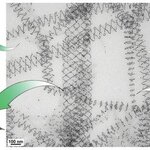Chemistry

To prolong the shelf life of foods, manufacturers often add hydrogen to natural oils, a process called hydrogenation. But hydrogenation also results in the production of trans fats, which have adverse health effects such as raising bad cholesterol and increasing the risk for coronary heart diseases. Trans fats are found in vegetable shortenings, some margarines, crackers, cookies and snacks. Health authorities worldwide recommend that people reduce their consumption of trans fats.
UC Riverside chemists have designed a catalyst (a substance that accelerates a chemical reaction)…

Stradivarius and his violins are so eponymous in our culture that they have become a benchmark for quality - and the mystery of why they sound so good has baffled competitors for centuries. After 33 years of work, a Texas A&M University professor is confident he knows the secret - chemistry.
Joseph Nagyvary, a professor emeritus of biochemistry, first theorized in 1976 that chemicals used on the instruments – not merely the wood and the construction – are responsible for the distinctive sound of these violins. He says his controversial theory has now received definitive…

The future of the nanotechnology field depends on our ability to reliably and reproducibly assemble nanoparticles into 3D structures we can use to develop new technologies. According to Hao Yan and Yan Liu at Arizona State University, the greatest challenges in this burgeoning field include control over nanoscale 3D structure and imaging these tiny materials.
"The ability to build predicted structures and provide experimental feedback to current theories is critical to the nanotechnology field," said Yan.
One approach to production of nanoscale architecture is creation of nanoparticles that…

You may remember the melamine scandal where in September this year over a thousand babies were made ill and four died as a result of producers putting melamine, or worse, melamine scrap into milk to increase its apparent protein content as determined by standard analytical methods (basically nitrogen determination.)
A couple of days ago I came across an online article: Dairy detection: monitoring melamine in milk from which it appears that two groups, one that of Renate Zenobi of ETH Zürich [1] (‘home’ of Einstein and many other famous physicists), and that of Graham R. Cooks at…

I just saw on Discover.com a blog post that almost made me wish I was teaching Chemistry again.....almost.
It's about some scientists who have been making a Periodic Table of Videos- a very cool idea that could actually make the periodic table interesting for a change. Check out a couple of their videos- I know my students would like them based on the eccentric cast of characters I saw just in the Tungsten video.
The only disadvantage is that the videos are all on You Tube- teachers and those with internet blockers beware!
And in case anyone's wondering, I would want some sodium…

Chemistry is wonderful. Chemistry now has to play more than ever an interdisciplinary role for new visions. Here are two wonderful studies that I caught singing to me in 2008. Both contain elegant science that promises sheer greatness. Each rocks in a different manner by means of chemistry.
The first one is in polymer chemistry, a dear interest of mine, for molecules that can rotate and slide. The second, an Inventors Hall of Fame winner, solves living-cell networks to cure the sick.
Poly-pseudorotaxanes via Ring-Opening Metathesis Polymerizations of Catenanes - This cool title is about…

This week I participated in a Social Media Day at NIST. During my talk I provided an overview of our current work in using Web2.0 tools for doing Open Notebook Science in fields related to chemical synthesis and drug discovery.
During my talks I generally try to place our work in context and give the audience a sense of where I see science evolving. I often start with the increasingly important role of openness and at some point follow up with this slide showing the shift of scientific communication from human-to-human to machine-to-machine. My position is that we are entering a middle phase…

This week I participated in a Social Media Day at NIST. During my talk I provided an overview of our current work in using Web2.0 tools for doing Open Notebook Science in fields related to chemical synthesis and drug discovery.
During my talks I generally try to place our work in context and give the audience a sense of where I see science evolving. I often start with the increasingly important role of openness and at some point follow up with this slide showing the shift of scientific communication from human-to-human to machine-to-machine.
My position is that we are entering a middle phase…

Informex today announced that it will invite young chemists to attend the upcoming InformexUSA exhibition in San Francisco free of charge. The invitation opens the door for chemists and chemical engineers 25 and under to learn more about the chemical technologies manufacturers will require in the years ahead to commercialize exciting new concepts in areas like nano technology, pharmaceutical fine chemicals, and green chemistry. More than 500 chemical industry companies and allied trades will exhibit molecules, chemical manufacturing techniques and material science concepts during InformexUSA…

People said it couldn't be done, but researchers from the University of Pittsburgh and the U.S. Department of Energy National Energy Technology Laboratory (NETL) in Pittsburgh demonstrated a molecular chain reaction on a metal surface - a single electron caused a self-perpetuating chain reaction that rearranged the bonds in 10 consecutive molecules positioned on a gold surface. As each molecule's original bond was broken by the reaction, the molecule rearranged itself to form a new molecule.
Study coauthor Kenneth Jordan, a Distinguished Professor of Chemistry in Pitt's School of Arts and…